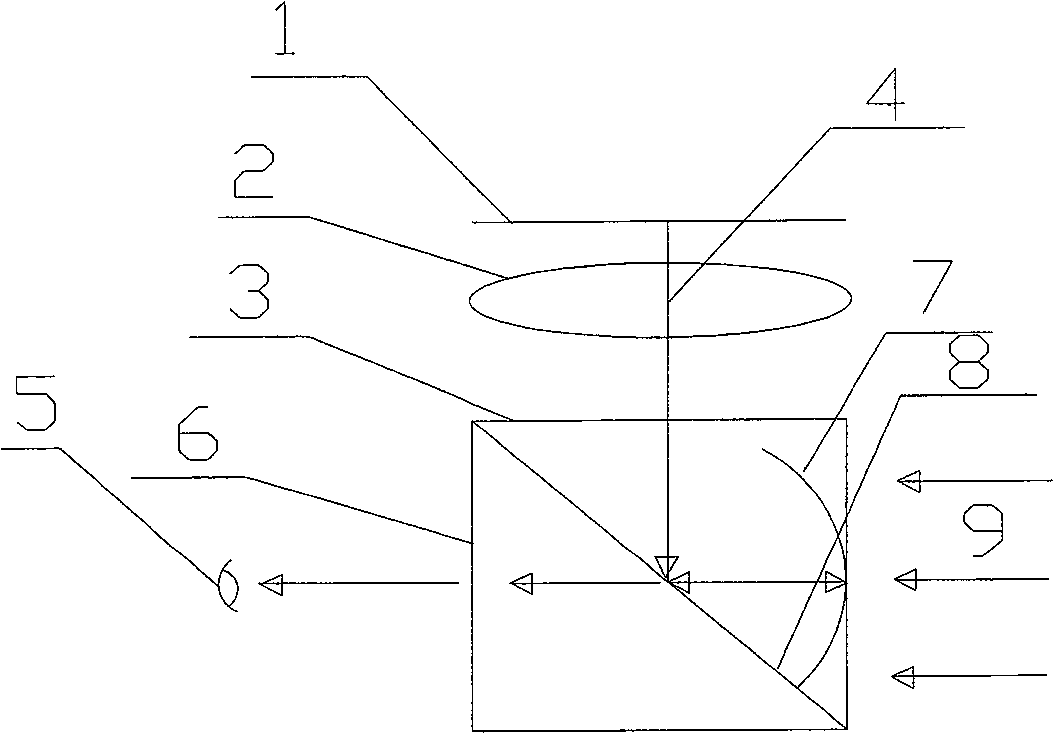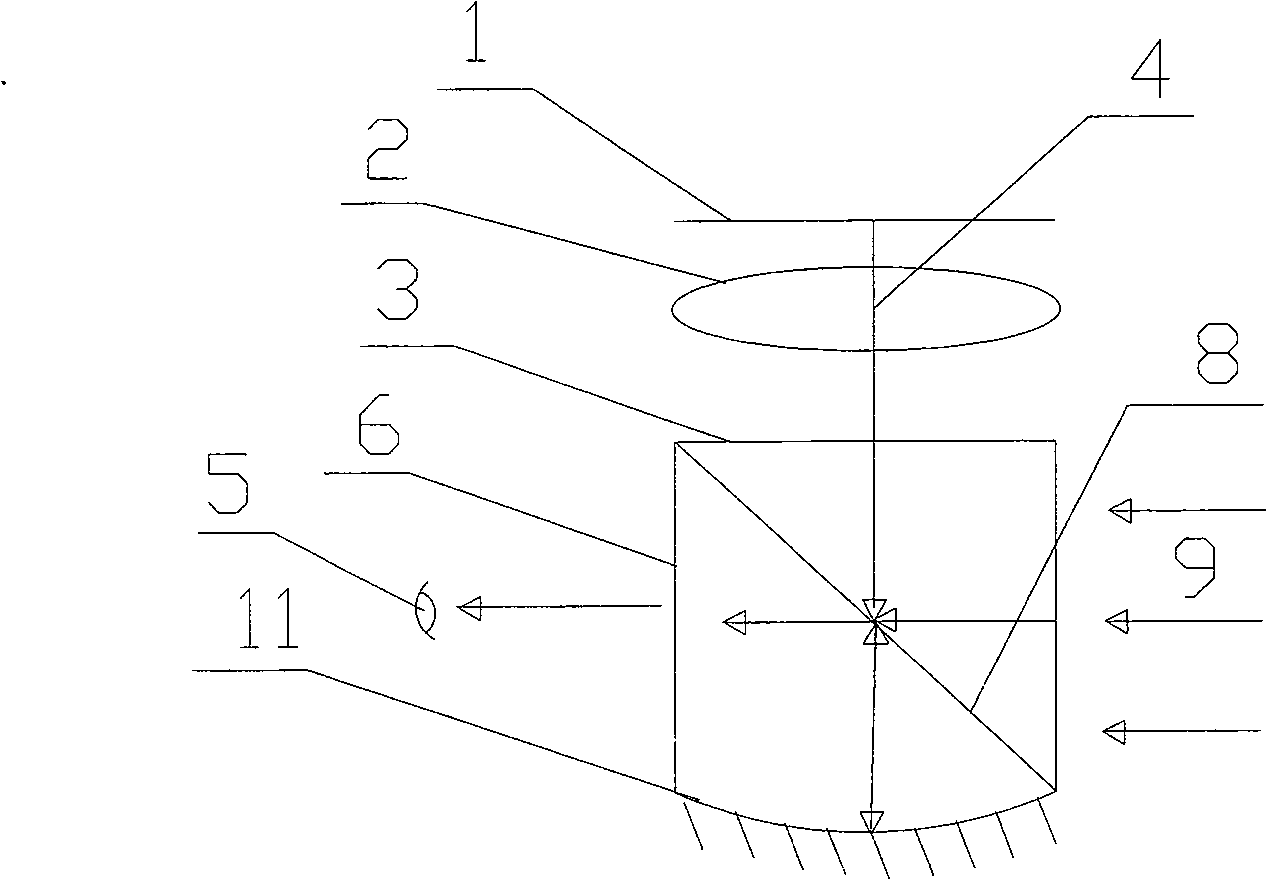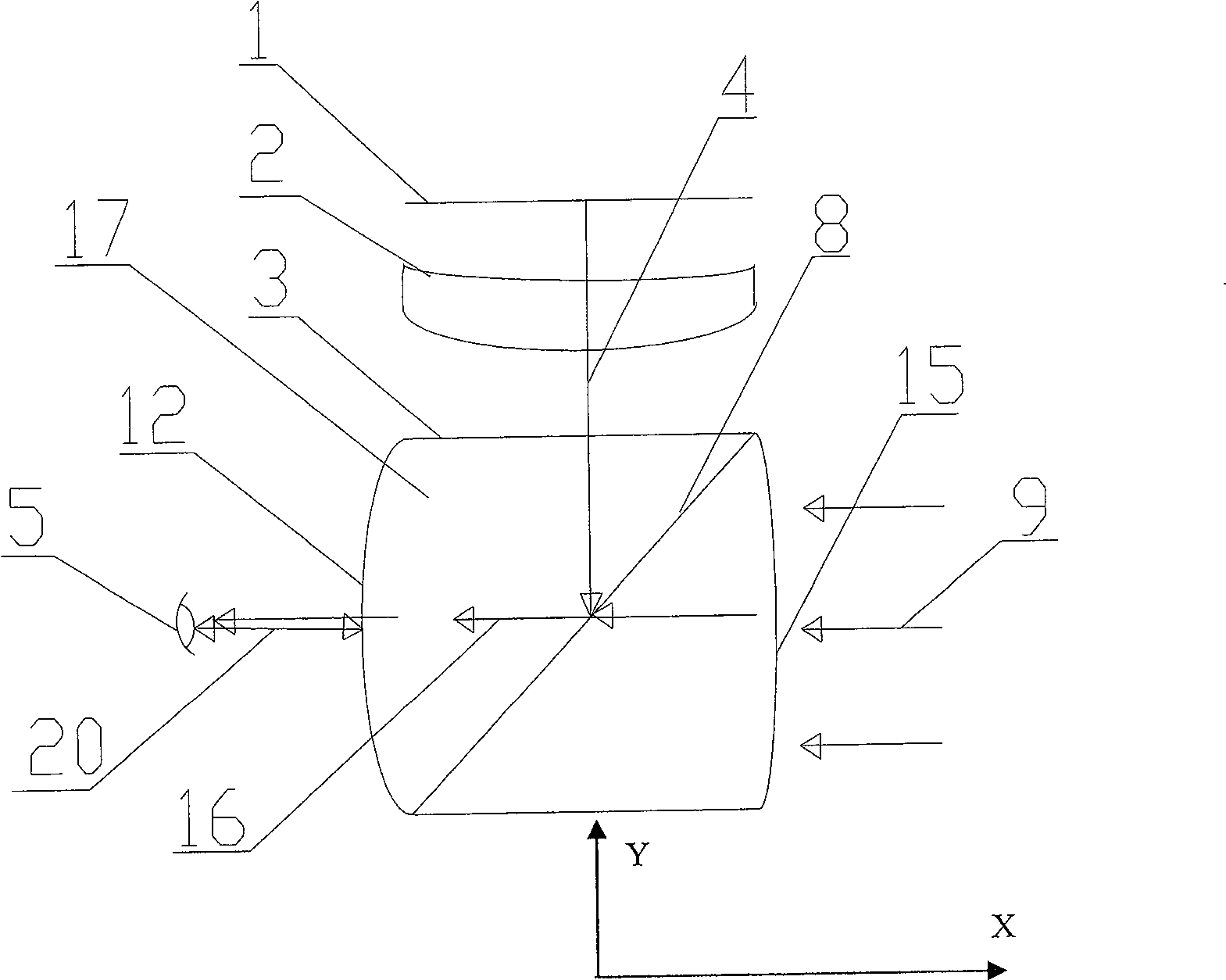Optical imaging system for helmet display
An optical imaging system and head-mounted display technology, applied in optics, optical components, instruments, etc., can solve the problems of not being fully reflected, image distortion, image blur, etc., to improve the utilization rate of light energy, reduce image distortion, The effect of correcting edge aberrations
- Summary
- Abstract
- Description
- Claims
- Application Information
AI Technical Summary
Problems solved by technology
Method used
Image
Examples
specific Embodiment 1
[0027] Specific embodiment one, such as image 3 As shown, from the first direction according to the incident direction of the first ray 4 are the image information display source, the free-form surface prism 2 and the combined prism 17, and from the second direction according to the incident direction of the second light 9 are the combined prism 17 and the eyepiece 12. The image information display source is preferably a miniature liquid crystal display 1, and can also be other displays such as OLED or PDP that can display images. The optical axis of 2 is coaxial with the optical axis in the vertical direction of the combined prism 17, and the optical axis of the eyepiece 12 is coaxial with the optical axis in the horizontal direction of the combined prism 17, so as to ensure that the light will not be generated due to the difference in the optical axis during the propagation process. Aberration distortion. Half mirror 8 is positioned in combined prism 17, and is positioned...
specific Embodiment 2
[0030] Specific embodiment two, different from specific embodiment one is that the mirror surface of eyepiece 12 facing the human eye is a convex surface, this convex surface is located on the optical path of the third light ray 16, has the effect of divergence, and the focus of the eyepiece is that the light passes through the free-form surface prism and The converging point after the semi-reflective mirror is emitted, the light emitted through the eyepiece becomes parallel light, which reaches the human eye directly.
specific Embodiment 3
[0031] Specific embodiment three, different from specific embodiments one and two is that the combined prism has a convex surface 15 on the side close to the outside world, and the convex surface 15 is located on the optical path of the second light 9, so that the second light 9 enters the combined prism 17 After converging, its optical path coincides with the optical path of the first light 4 emitted by the miniature liquid crystal display 1 on the half mirror 8 . The curvature of the convex surface 15 is calculated to ensure that the light passing through the transflective optical surface can coincide with the light emitted by the liquid crystal display and reflected by the transflective optical surface to ensure image quality.
PUM
 Login to View More
Login to View More Abstract
Description
Claims
Application Information
 Login to View More
Login to View More - R&D
- Intellectual Property
- Life Sciences
- Materials
- Tech Scout
- Unparalleled Data Quality
- Higher Quality Content
- 60% Fewer Hallucinations
Browse by: Latest US Patents, China's latest patents, Technical Efficacy Thesaurus, Application Domain, Technology Topic, Popular Technical Reports.
© 2025 PatSnap. All rights reserved.Legal|Privacy policy|Modern Slavery Act Transparency Statement|Sitemap|About US| Contact US: help@patsnap.com



